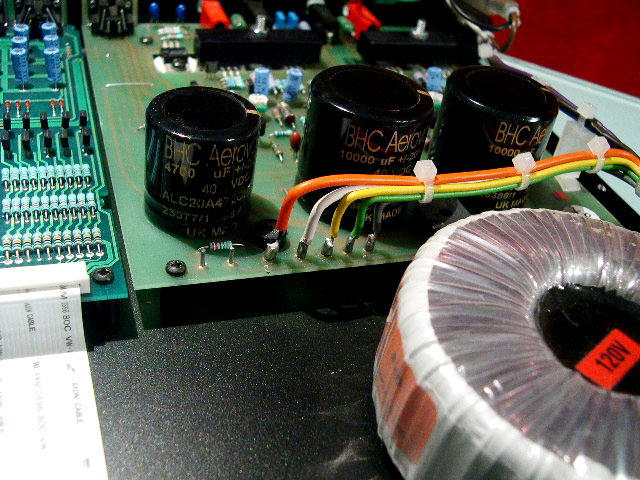As suspected my arrangement to power the pre-section with a 2nd trafo is at fault.
Disconnecting the 2nd trafo and using a DIY SuperRegged HiCap for the pre-amp section via the external sockets, all problems with tripping disappear. Sounds sweet too

A single box solution is of course possible and in this case desired, besides I need the HiCAP back on my headphone amp.
This image of a Nait 3R shows 7 pins.
In my case, from right to left:
Pins 1-3 - secondaries and centretap from the CD3 trafo
Pins 4 & 5 - secondaries from 2nd trafo
The issue is with pins 6 & 7. On a non-remote Nait3 these link via a 270R resistor to the logo illumination panel.
A diagram always helps.
Two differences for me: with the remote control version the pre-amp section powers the front panel and on the NAP board I have the 270R resistor is a wire-link.
Pin 6 - is connected to 0V
Pin 7 - is connected (via wire link) to neg leg of the second bridge rectifier
My 'faulty' setup involved bridging pins 6 & 7 to provide a direct return for the second trafo to 0V. Without this link there's no return and no output from the pre-amp supply section.
Question is why does this result in trips and why does the arrangement in the photo above work without a return for the bridge rectifier?
Perhaps if I replace the wirelink going into pin 7 with a resistor (270R + approx load of a logo display) and retain the pin 6 & 7 link it'll work but I'd rather understand things first.
Nick




